The Cistercian monastery of Neuzelle is considered the Baroque wonder of Brandenburg. It asserted itself as the center of the Counter-Reformation in Protestant Prussia. Since its foundation in 1268, the monastery has survived raids, fires and entire system changes. Today it presents itself as a completely preserved monastery complex with two baroque churches, a late gothic cloister and an extensive monastery garden, which was also designed according to baroque plans.
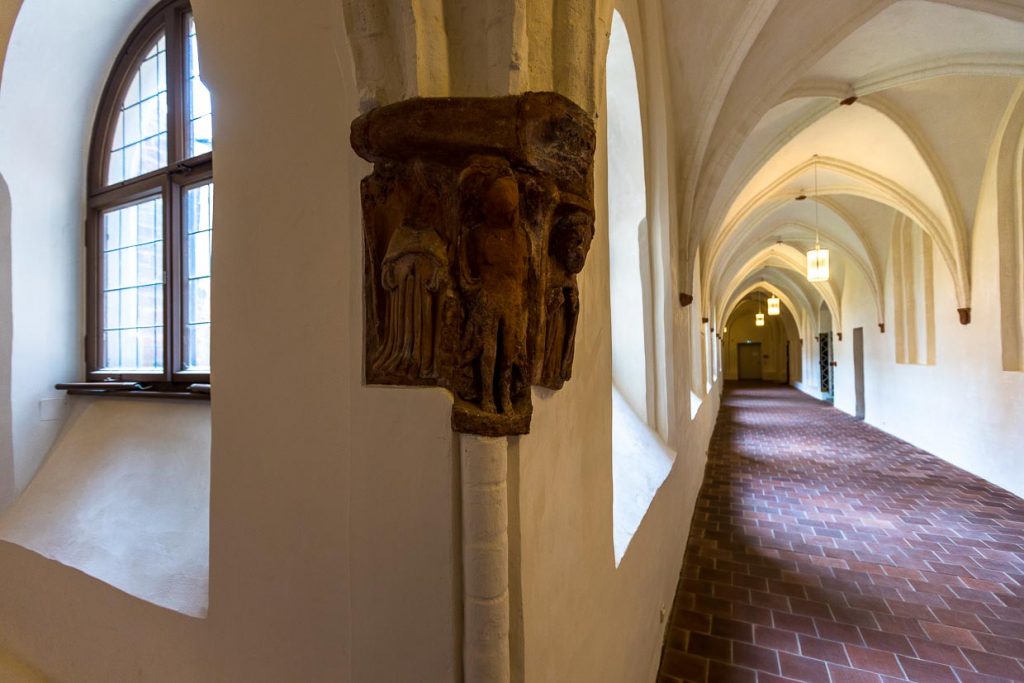
The historical heritage of the site is successfully preserved by the Neuzelle Abbey Foundation. All buildings are used, as school and boarding school, as event rooms, café or modern museum rooms. Impressive are the monastery garden with a wide view over the Oder floodplain to Poland and the opulent church rooms. A network of cycling and hiking trails also leads visitors to the monastery gates. The monastery’s more than 750-year history tells of departures and crises, of endings and new beginnings. The name Neuzelle seems to be the program here, because an astonishing amount of new things are still being created here.
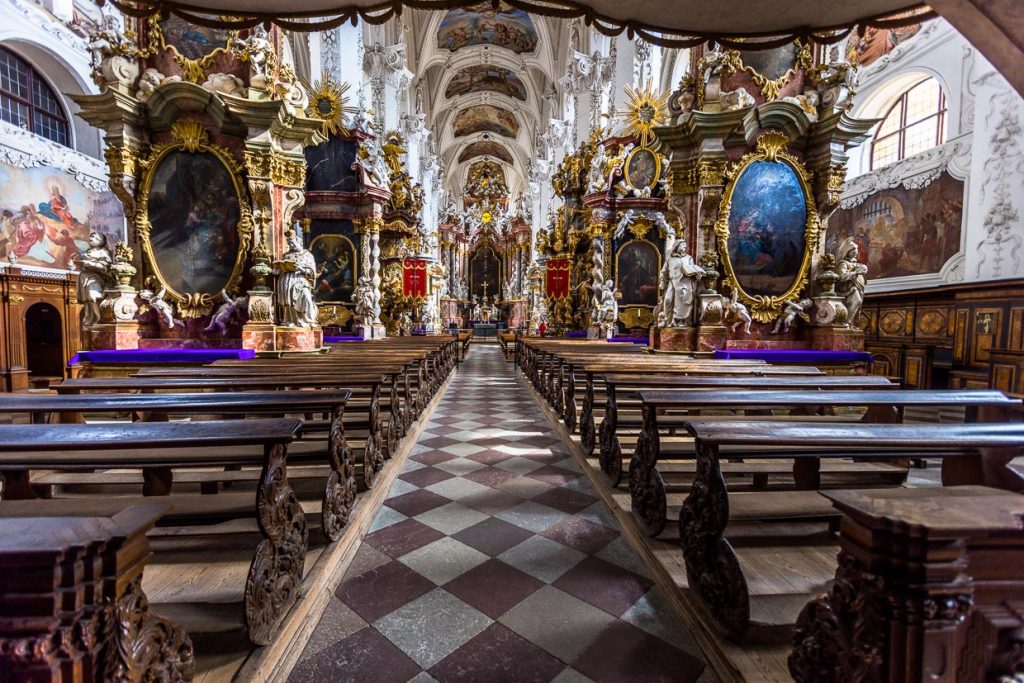
The monks are back
Until its dissolution in 1817, Neuzelle was a small but active Cistercian monastery. Never more than 40 monks lived in Neuzelle. When they had to make way in the 19th century by order of the Prussian King Frederick William III, the monastery buildings were used as churches for the Protestant and Catholic congregations and as a school and teacher’s seminary. This use endured and survived even the ideological diaspora in which the church found itself during GDR times. After the fall of the Berlin Wall and the reunification of Germany, the monastery complex became the property of the Neuzelle Monastery Foundation and a phase of extensive restoration began.
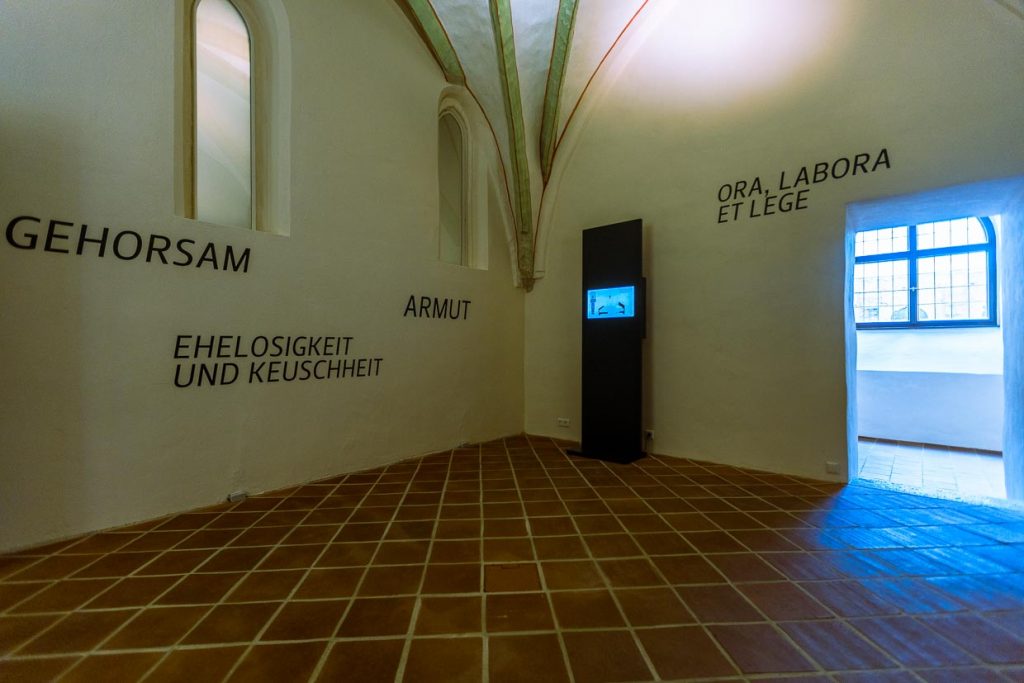
Fundraising for Future
In 2018, even the monks are returning after more than 200 years. The Cistercian order, which once established the Neuzelle monastery, is founding a priory in Neuzelle. The small convent with currently six monks, two candidates and one novice has a lot planned. About eight kilometers from the historic monastery complex, a new monastery is to be built in Treppeln in the middle of the forest on the site of a former Stasi facility. The monks answer the question of why the foundation stone for a new monastery is to be laid next to a beautiful historic monastery complex in 2023 quite urbane via a social media campaign. Since the Neuzelle monastery has been completely converted to cultural use, all buildings are occupied and many well-attended events take place on the monastery grounds throughout the year, the monks would like a retreat where they can find peace for a spiritual life. But until that happens, they have to do a lot of public outreach to raise the necessary money. What used to be called a collection is now called fundraising. The monks are already proclaiming their good news via YouTube video and podcast.
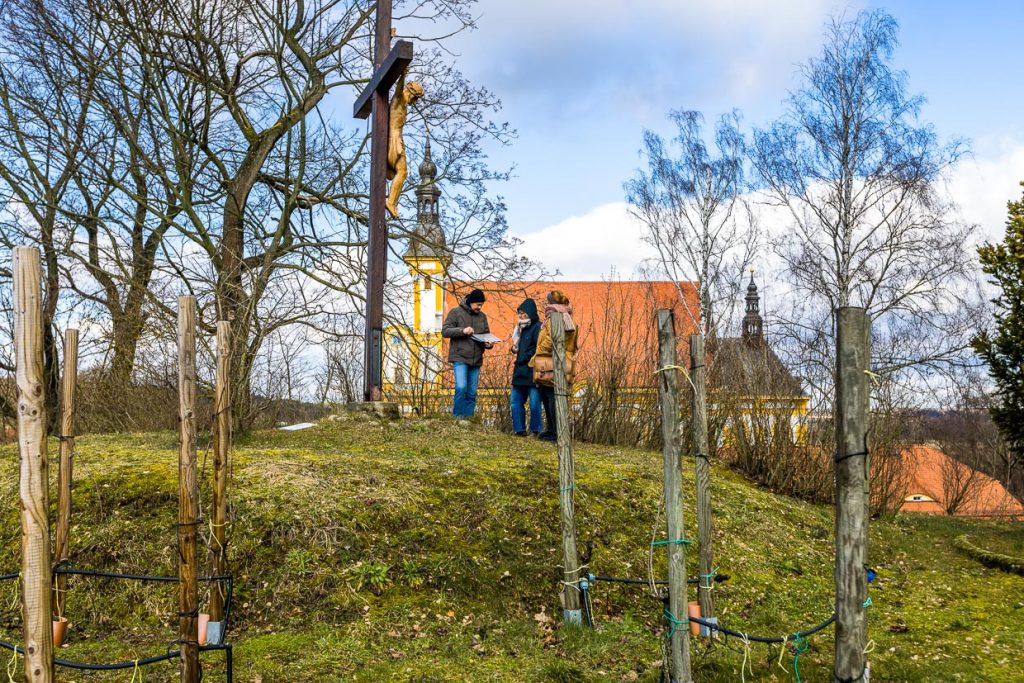
Resurrection in 14 acts
Another resurrection has been on view at Neuzelle Abbey since 2015. The Heavenly Theater Museum is dedicated to a surprise find that was discovered in 1997 in the middle of the restoration phase of the monastery. A trend of the Baroque, especially in Bohemia, Bavaria and Tyrol, was the replica of the tomb of Jesus. Between Easter and Pentecost, massive backdrops were erected in front of the altar. In Neuzelle, a complete scenery theater has been preserved, which was able to show 14 Passion scenes in five stage sets. For this unusual and complete find, a special museum was built in the vineyard of the monastery. Through a dark tunnel, visitors are led to a neon sign with a quotation from the prophet Jesaya. His tomb will be magnificent. Indeed, the illuminated backdrops in the dark room do not miss their effect. In baroque splendor and almost life-size, two Passion scenes are shown at a time. The stage sets served from 1750 in Neuzelle for the dramatization of the Easter and Passion events. No theater was performed in them. The set up figures and scenery served for contemplation and meditation. Presumably around 1863 the heavenly theater came to an end. It took 135 years and much painstaking restoration work until the resurrection.
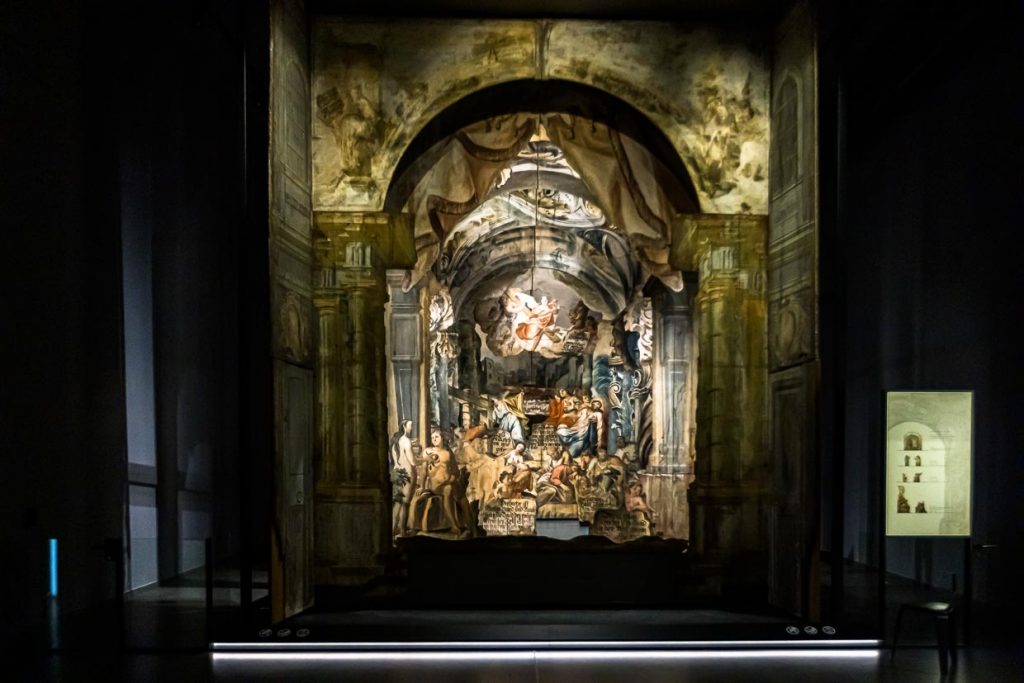
Geometry in the monastery garden
In the Baroque period, even a kitchen garden should be beautiful. Today, everyone who visits the Neuzelle monastery garden benefits from this. Those who visit the monastery grounds for the first time get a special wow effect as a gift with their free admission. To get to the garden, one crosses the spacious Stiftsplatz. Behind the iron bars of a garden fence, the monastery garden with its visual axes and geometric shapes suddenly lies three terraces below. The view sweeps across the baroque garden complex to the floodplain landscape of the Oder River and as far as Poland. Starting in 1755, Abbot Gabriel had this magnificent garden built in the spirit of absolutism to subdue everything, including nature. It was a perfect and already at that time very expensive staging. Nature was geometrized and some vanities of the Baroque were added, such as an orangery with 120 bitter orange trees or a carnation pavilion for the dianthus, the divine flower that recalls the sufferings of Christ.

The Neuzelle Monastery Garden is the only Baroque garden in Brandenburg and is one of the 50 most important gardens in Germany. It took 25 years to explore and recreate the garden. Almost the entire complex was forested. During the restoration, the old structures were carefully approached, says head gardener Ralf Mainz. Among the many trees that had no place in the orderly Baroque, there were also five yews. The gaps between the 300-year-old seniors were closed again with conical yews.
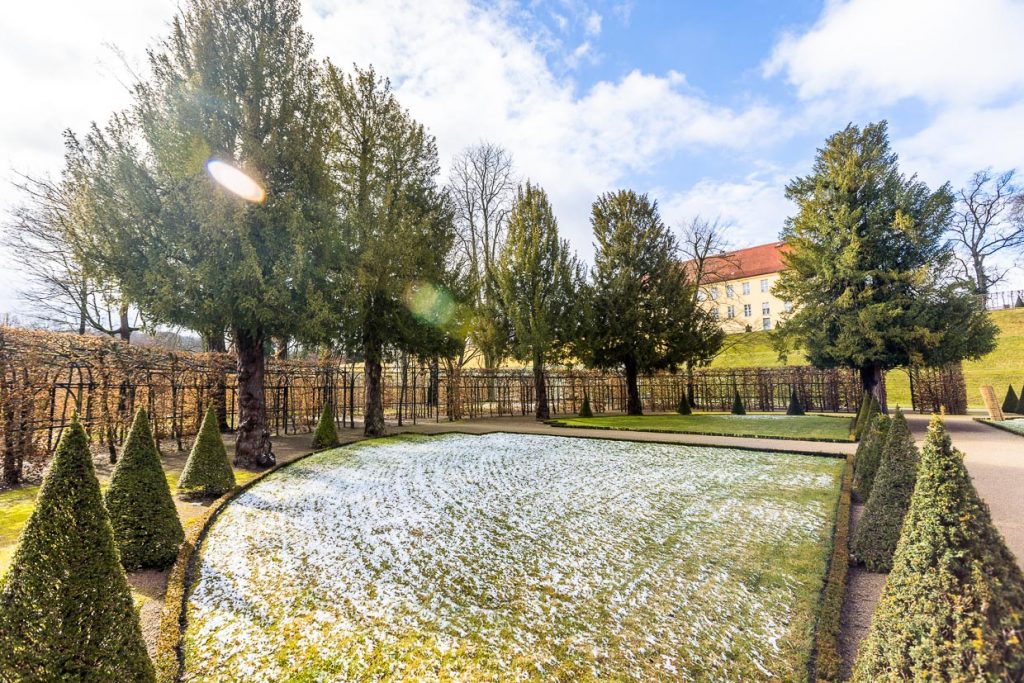
Sweet fruit and wild monastery cuisine
Not much is happening in the kitchen garden at the beginning of March. Onions are in the beds and the rhubarb has already ventured out of the ground. The 120 orange trees are still in their winter quarters. As soon as it is warm enough, they will make room in the orangery, which will then be available to visitors as a café and event venue. Garden talks with experts on the tradition of kitchen gardens or the care of citrus trees are held regularly. The orangery has seen many uses. After the dissolution of the monastery, it was probably one of the first buildings to be used as a gymnasium.
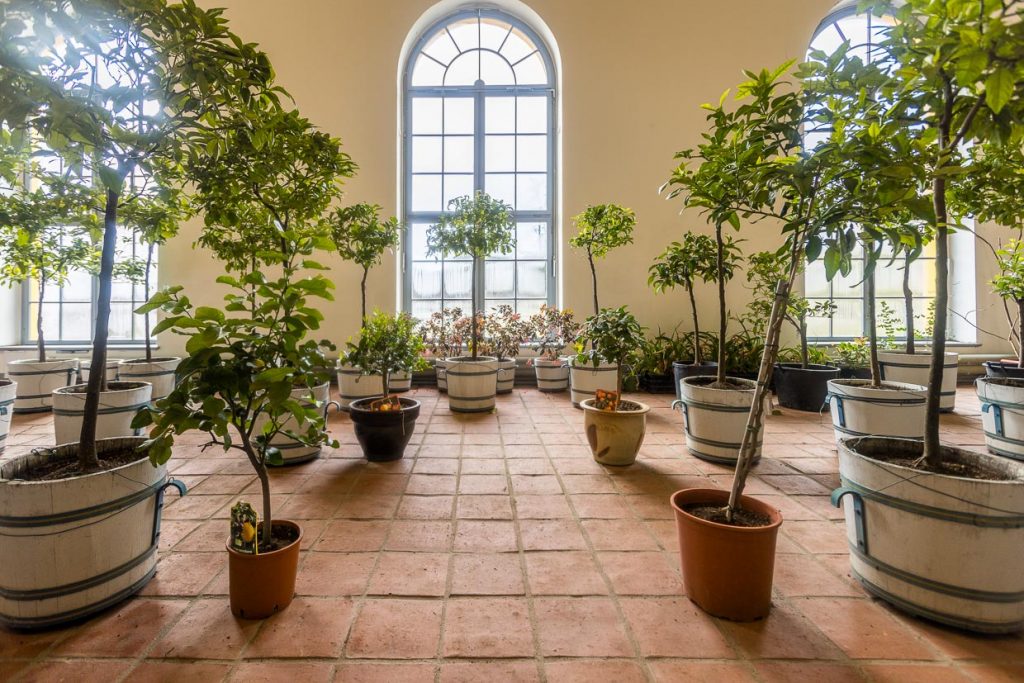
The beds in the kitchen are tended all year round by the monastery’s garden team. Naschwein and Schnurräumchen with apples are to be enjoyed as they stroll by, as in baroque times. Until that time, visitors will have to make do with nibbling strawberries, which they do with enthusiasm, reveals gardener Ralf Mainz. The harvest from the kitchen beds goes for the most part into the wild monastery kitchen of Manuel Bunke.
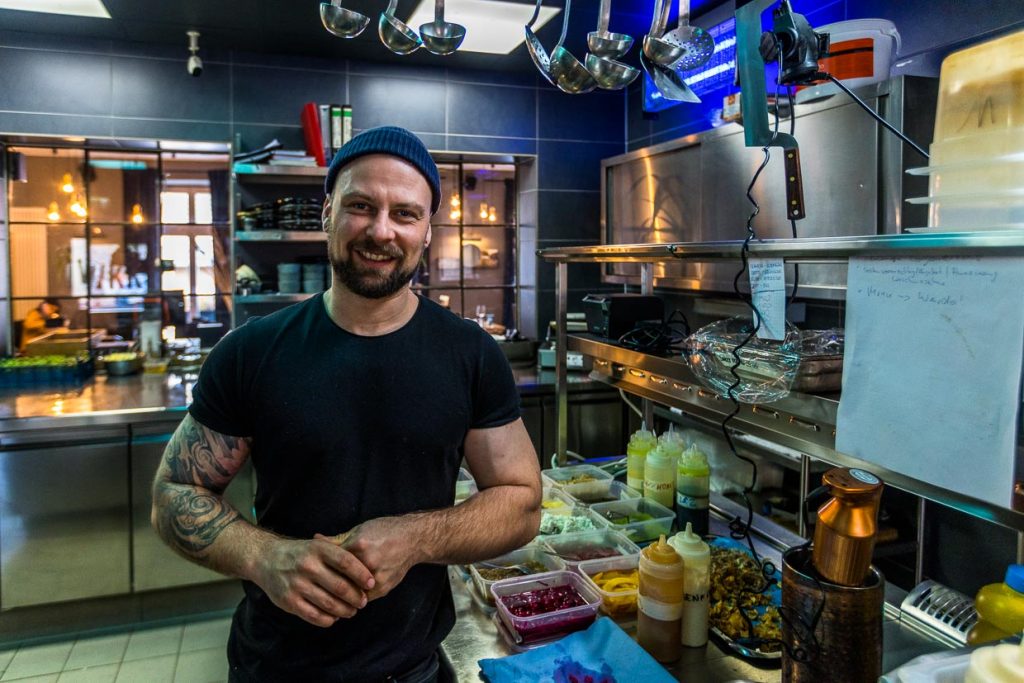
Chef Bunke has opened Restaurant WKK not far from the monastery. He strives for a modern, urban culinary art in harmony with nature. The cooperation with the monastery garden stands for particularly short distances. He appreciates the old vegetable varieties such as Jerusalem artichoke and oat root or the cabbage he gets from the monastery garden. Nose-to-tail and leaf-to-root are the credos of his lived love of home. After many years of being on the road, since 2018 he has been cooking a seasonal menu that places special emphasis on regional origins and the holistic use of food.
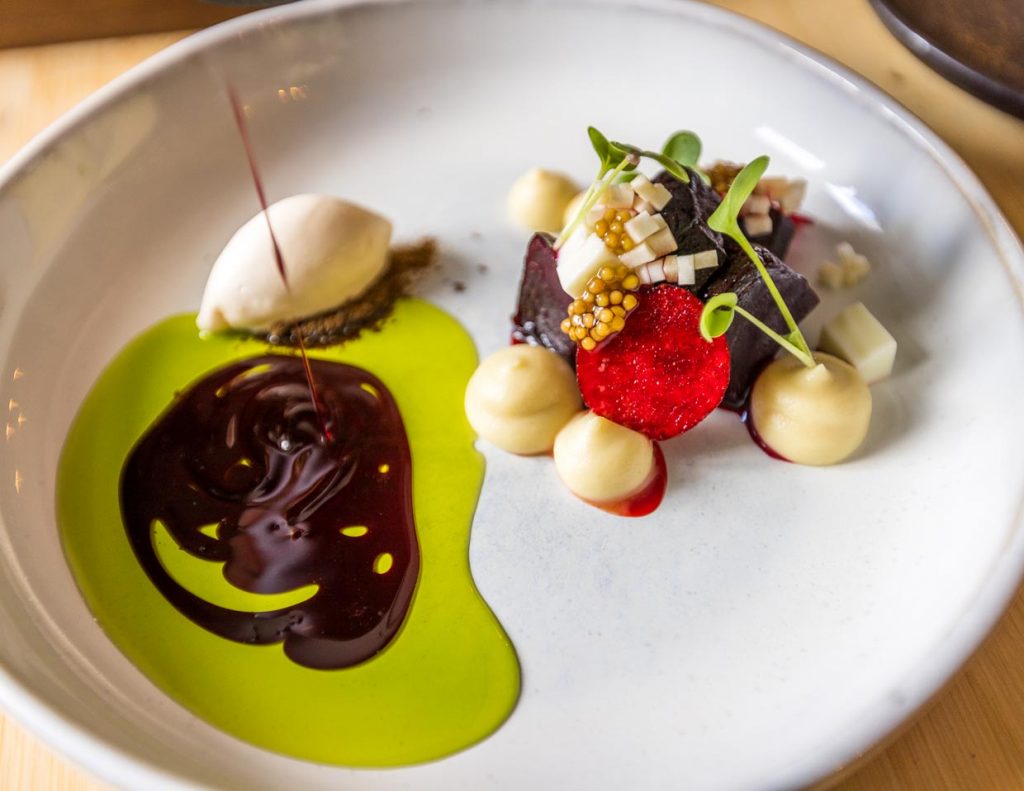
Beer revolution in the monastery brewery
Beer has been brewed for sale at the Klosterbrauerei since 1589. The brewery’s best-seller is Black Abbot, a black beer with a long tradition, fortified with sugar and Pope Francis’ blessing. You should definitely try this Neuzell classic during a brewery tour or in the surrounding gastronomy. In addition to a wide and creative range of beers, since the beginning of 2023 the monastery brewery has been making a name for itself with an idea that could revolutionize the beer market. It is a beer without a brewing process. More about the beer powder from the Klosterbrauerei Neuzelle.

More information about the Cistercian monastery of Neuzelle, the monastery museum in the cloister, the Heavenly Theater and the monastery garden here. For a visit to the Wilde Klosterküche, the restaurant WKK of chef Manuel Bunke, you should reserve a table. For more tips and destinations, see Brandenburg as a travel destination. The combination with the socialist model city Eisenhüttenstadt, which is only 10 kilometers away and at the same time the largest contiguous area monument in Germany, is absolutely recommendable.

